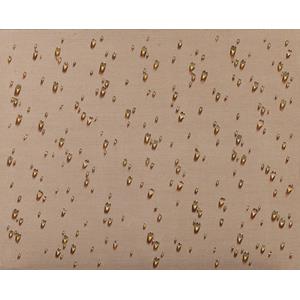IMAGE DETAILS

Boon Gallery
Kim Tschang-Yeul (South Korea, Maengsan 1929-2021 Seoul)
Water Drops, 1982
Oil on canvas
88 x 116 cm
Signed and dated on side
Certificate of authenticity by the Kim Tschang Yeul Estate, Paris, 2024
Kim Tschang-Yeul’s “Water Drops” (1982) : The Poetry of Transparency and Memory
In the canon of modern Korean art, few images are as quietly transcendent as Kim Tschang-Yeul’s “Water Drops” (1982). At first glance, the painting appears deceptively simple: dozens of shimmering droplets, rendered with photorealistic precision, glisten on a neutral surface. Yet beneath this serene minimalism lies a profound meditation on trauma, memory, and the act of healing through repetition and abstraction.
A Painter of Reflection
Kim Tschang-Yeul (1929–2021), one of Korea’s most internationally recognized artists, devoted more than five decades of his life to painting waterdrops. The motif became his lifelong language - an artistic mantra through which he reconciled personal and collective histories of pain. Born during Japanese colonial rule and coming of age amid the devastation of the Korean War, Kim’s generation witnessed rupture on an existential scale. For him, the transparent droplet was not just an image of purity but a vessel of remembrance.
Each droplet in “Water Drops” is painstakingly painted to capture the physics of light - its refractive halo, its minute shadow, its suspended stillness. The artist’s technique recalls both traditional East Asian ink painting and Western photorealism, bridging two worlds while belonging fully to neither. In this sense, Kim’s work stands as a quintessential product of Korea’s postwar modernity - globally conversant yet deeply rooted in the meditative sensibilities of his heritage.
The Philosophy of Emptiness
The “Water Drops” series embodies Kim’s lifelong engagement with the Buddhist and Taoist concepts of emptiness - the idea that reality is fluid, impermanent, and interconnected. By painting the same motif countless times, Kim transformed the act of creation into a form of ritual. The repetition was not mechanical but spiritual: each droplet became a brushstroke of mindfulness, a gesture toward clarity and release.
In the 1982 version, the droplets hover on a raw, unpainted surface giving the impression that they exist between two realms, at once real and illusory. This delicate ambiguity invites viewers to meditate on perception itself: what is solid, what is transparent, what is remembered, and what is forgotten.
Historical Significance and Global Resonance
By the early 1980s, when this “Water Drops” was created, Kim had already achieved international acclaim, particularly in Paris, where he lived for much of his career. Yet the work remains quintessentially Korean in spirit. It speaks to a nation’s collective resilience - to the ability to find beauty in fragility and to transform suffering into contemplation.
“Water Drops” also resonates within a broader global context. In an art world increasingly preoccupied with spectacle and conceptual irony, Kim’s devotion to a single, humble motif was a radical act of introspection. His waterdrops invite silence in a noisy world - a reminder that stillness, too, can be revolutionary.
Legacy
Today, Kim Tschang-Yeul’s “Water Drops” is more than an image; it is an icon of Korean modernism. It bridges East and West, abstraction and realism, trauma and transcendence. Its historical importance lies not only in its mastery of technique but in its insistence that art can be both deeply personal and universally resonant.



 download image
download image